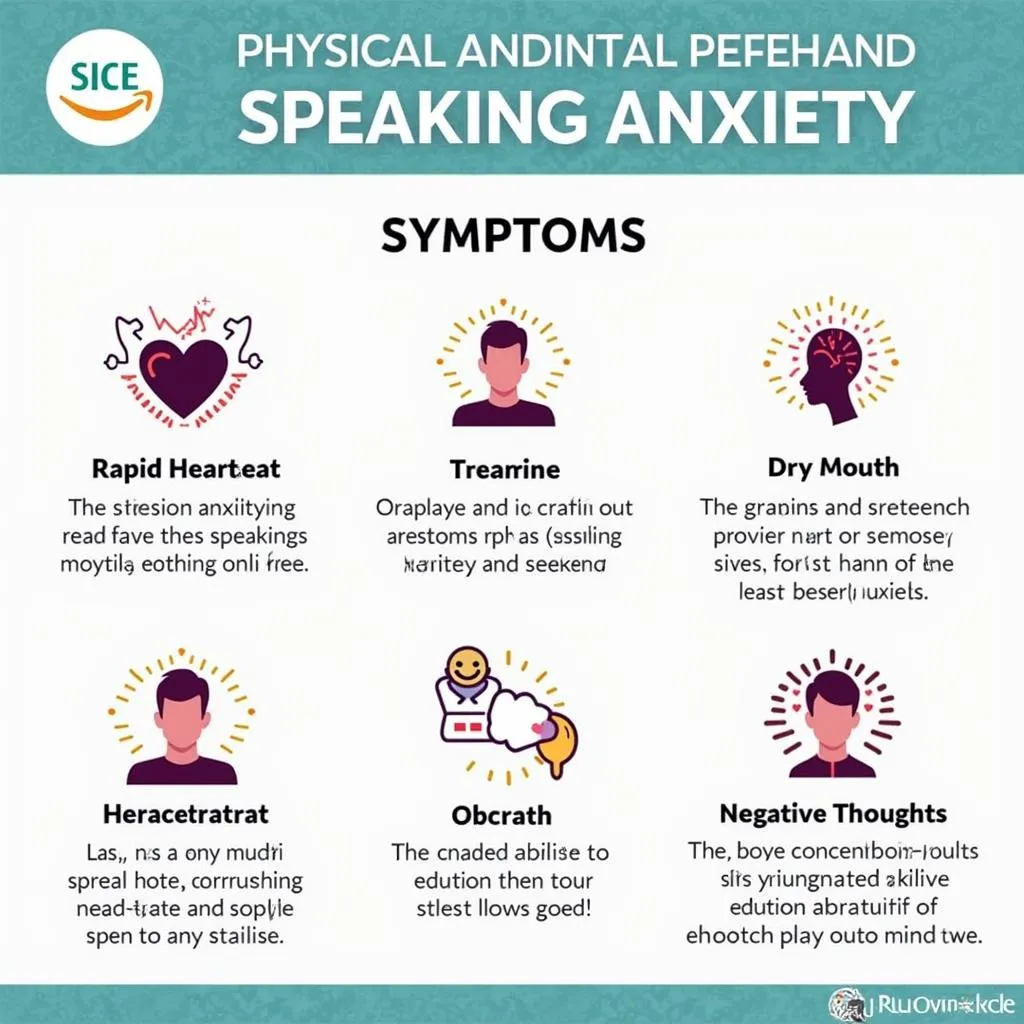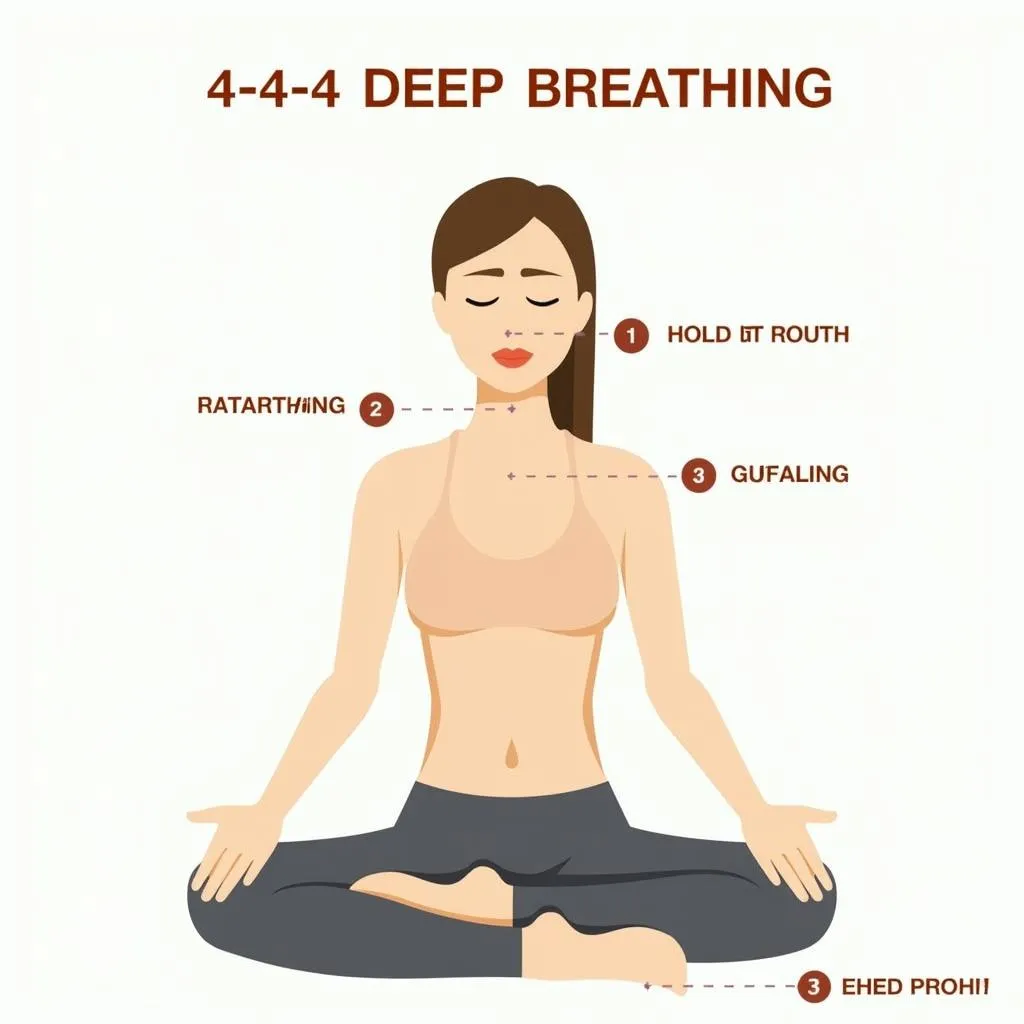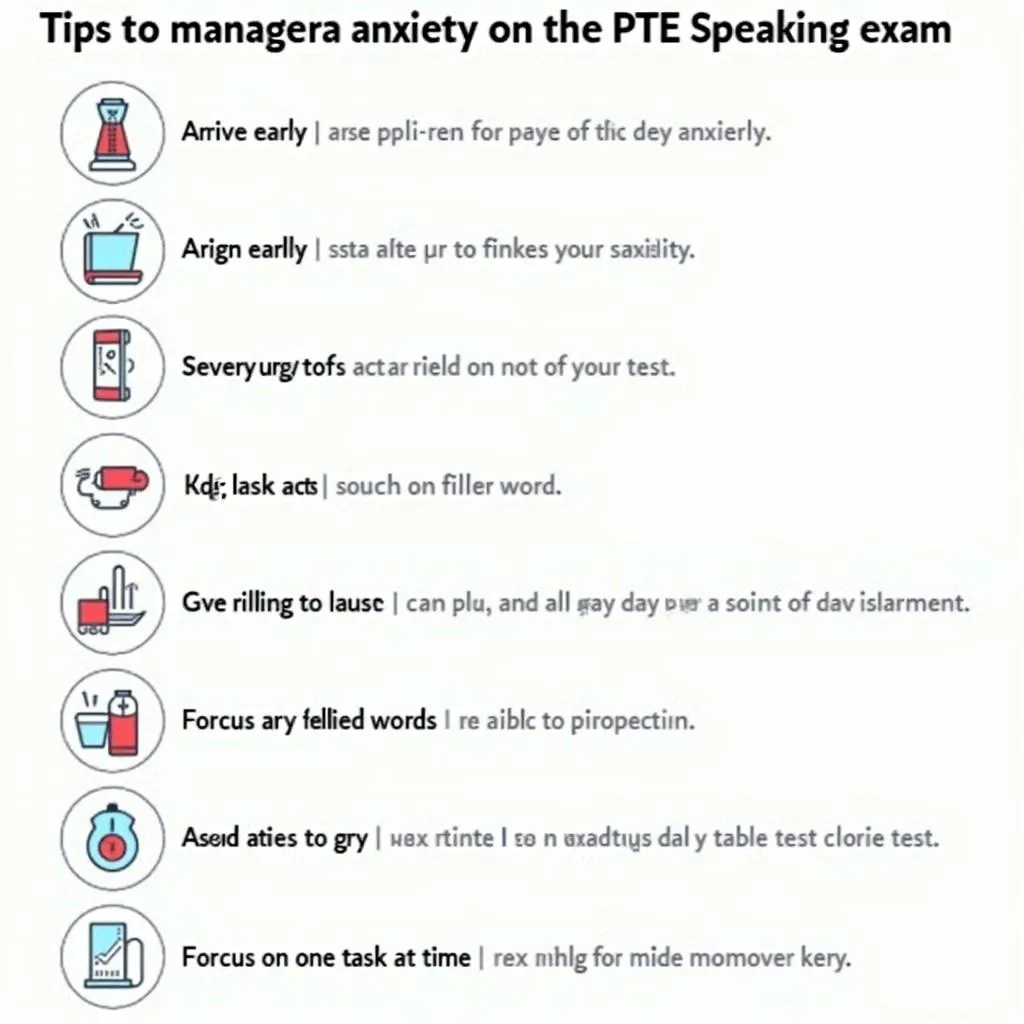Are you feeling nervous about the PTE Speaking section? You’re not alone. Many test-takers experience anxiety when it comes to speaking in a high-stakes exam like PTE Academic. However, with the right strategies and mindset, you can overcome your fears and perform at your best. In this comprehensive guide, we’ll explore effective techniques to manage speaking anxiety for PTE and boost your confidence.
Understanding PTE Speaking Anxiety
Speaking anxiety, also known as glossophobia, is a common fear that affects many people, especially in high-pressure situations like the PTE exam. It’s essential to recognize that feeling nervous is normal and can even be beneficial if managed properly.
Common Symptoms of Speaking Anxiety
- Rapid heartbeat
- Sweating
- Trembling or shaking
- Dry mouth
- Difficulty concentrating
- Negative thoughts or self-doubt
 Common symptoms of PTE speaking anxiety
Common symptoms of PTE speaking anxiety
Understanding these symptoms can help you identify and address your anxiety more effectively. Remember, the key is not to eliminate anxiety completely but to manage it productively.
Preparation: The Key to Confidence
One of the most effective ways to reduce speaking anxiety is thorough preparation. The more familiar you are with the PTE Speaking tasks and format, the more confident you’ll feel on test day.
Familiarize Yourself with PTE Speaking Tasks
- Read Aloud
- Repeat Sentence
- Describe Image
- Re-tell Lecture
- Answer Short Question
PTE official mock test comparison can be an invaluable resource to familiarize yourself with the exam format and question types. By practicing with official materials, you’ll gain a better understanding of what to expect, reducing uncertainty and anxiety.
Develop a Consistent Practice Routine
Establishing a regular practice schedule is crucial for building confidence and reducing anxiety. Here’s a suggested routine:
- Set aside 30-60 minutes daily for PTE Speaking practice
- Focus on one task type per day, rotating through all tasks each week
- Record yourself and listen back to identify areas for improvement
- Practice in a quiet environment similar to the test center conditions
“Consistency is key when preparing for PTE Speaking. Regular practice not only improves your skills but also builds the confidence needed to overcome anxiety,” advises Dr. Sarah Thompson, a renowned PTE preparation expert.
Mindfulness and Relaxation Techniques
Incorporating mindfulness and relaxation techniques into your PTE preparation can significantly reduce speaking anxiety. These practices help calm your mind and body, allowing you to focus better during the exam.
Deep Breathing Exercises
- Sit comfortably with your back straight
- Inhale slowly through your nose for 4 counts
- Hold your breath for 4 counts
- Exhale slowly through your mouth for 4 counts
- Repeat this cycle 5-10 times before starting your practice or exam
 Deep breathing exercise to reduce PTE speaking anxiety
Deep breathing exercise to reduce PTE speaking anxiety
Progressive Muscle Relaxation
This technique involves tensing and then relaxing different muscle groups in your body, helping to release physical tension associated with anxiety.
- Start with your toes, tense them for 5 seconds, then relax
- Move up to your calves, thighs, and so on
- Finish with your facial muscles
- Pay attention to the feeling of relaxation in each muscle group
Practicing these techniques regularly can help you stay calm and focused during your PTE Speaking tasks.
Positive Self-Talk and Visualization
The power of positive thinking shouldn’t be underestimated when it comes to managing speaking anxiety. Replacing negative thoughts with positive affirmations can significantly boost your confidence.
Positive Affirmations for PTE Speaking
- “I am well-prepared and confident in my speaking abilities.”
- “I speak clearly and fluently in English.”
- “I remain calm and focused during my PTE Speaking tasks.”
- “My anxiety is normal, and I can manage it effectively.”
Repeat these affirmations daily, especially before practice sessions and on the day of your exam.
Visualization Techniques
Visualization is a powerful tool to prepare your mind for success. Here’s how to use it:
- Find a quiet place and close your eyes
- Imagine yourself in the PTE test center, feeling calm and confident
- Visualize yourself successfully completing each speaking task
- Picture receiving a high score on your PTE Speaking section
Regular visualization can help reduce anxiety by familiarizing your mind with the test-taking experience.
On the Day: Managing Anxiety During the Exam
Even with thorough preparation, you may still feel anxious on the day of your PTE exam. Here are some strategies to help you stay calm and focused during the Speaking section:
- Arrive early to familiarize yourself with the test center environment
- Use deep breathing techniques while waiting for your turn
- Stay hydrated to prevent dry mouth, a common symptom of anxiety
- Avoid filler words in PTE speaking by pausing briefly instead of using “um” or “uh”
- Focus on one task at a time, rather than worrying about the entire exam
“Remember, the examiners are not looking for perfection. They want to assess your ability to communicate effectively in English. Stay focused on expressing your ideas clearly, and don’t let small mistakes derail your confidence,” says Professor Michael Chen, a leading researcher in language testing anxiety.
 Tips for managing anxiety on PTE Speaking exam day
Tips for managing anxiety on PTE Speaking exam day
Post-Exam Reflection and Improvement
After completing your PTE exam, take some time to reflect on your experience. This reflection can help you identify areas for improvement and reduce anxiety for future speaking tasks or exams.
- Write down what went well and what challenged you
- Identify specific anxiety triggers and brainstorm strategies to address them
- Celebrate your accomplishments, no matter how small
- Set goals for continued improvement in your English speaking skills
Remember, managing speaking anxiety is an ongoing process. Each experience, including your PTE exam, is an opportunity to learn and grow.
Conclusion: Embracing Confidence in PTE Speaking
Managing speaking anxiety for PTE is a journey that requires patience, practice, and perseverance. By implementing the strategies discussed in this guide, you can significantly reduce your anxiety and perform at your best during the PTE Speaking section. Remember, a little nervousness is normal and can even enhance your performance when channeled positively.
Continue to practice regularly, use relaxation techniques, and maintain a positive mindset. With time and effort, you’ll find yourself feeling more confident and capable in your PTE Speaking tasks. For additional support and resources, consider exploring PTE mock tests practice online to further build your skills and confidence.
Embrace the challenge, trust in your preparation, and approach your PTE Speaking tasks with confidence. You’ve got this!
FAQ: Managing Speaking Anxiety for PTE
Q1: How long before the PTE exam should I start preparing to reduce anxiety?
A: It’s recommended to start preparing at least 4-6 weeks before your PTE exam to build confidence and reduce anxiety effectively.
Q2: Can listening to English podcasts or radio help with PTE Speaking anxiety?
A: Yes, regularly listening to English content can improve your listening skills and boost confidence in understanding and speaking English, which can help reduce anxiety.
Q3: Is it normal to feel more anxious about certain PTE Speaking tasks than others?
A: Absolutely. Many test-takers find specific tasks more challenging. Identifying these areas allows you to focus your practice and build confidence where needed.
Q4: How can I practice PTE Speaking if I don’t have a speaking partner?
A: You can practice alone by recording yourself, using PTE preparation apps, or joining online language exchange communities to find speaking partners.
Q5: Will the test center provide noise-canceling headphones to help with concentration?
A: Yes, PTE test centers typically provide noise-canceling headphones to minimize distractions and help you focus during the exam.